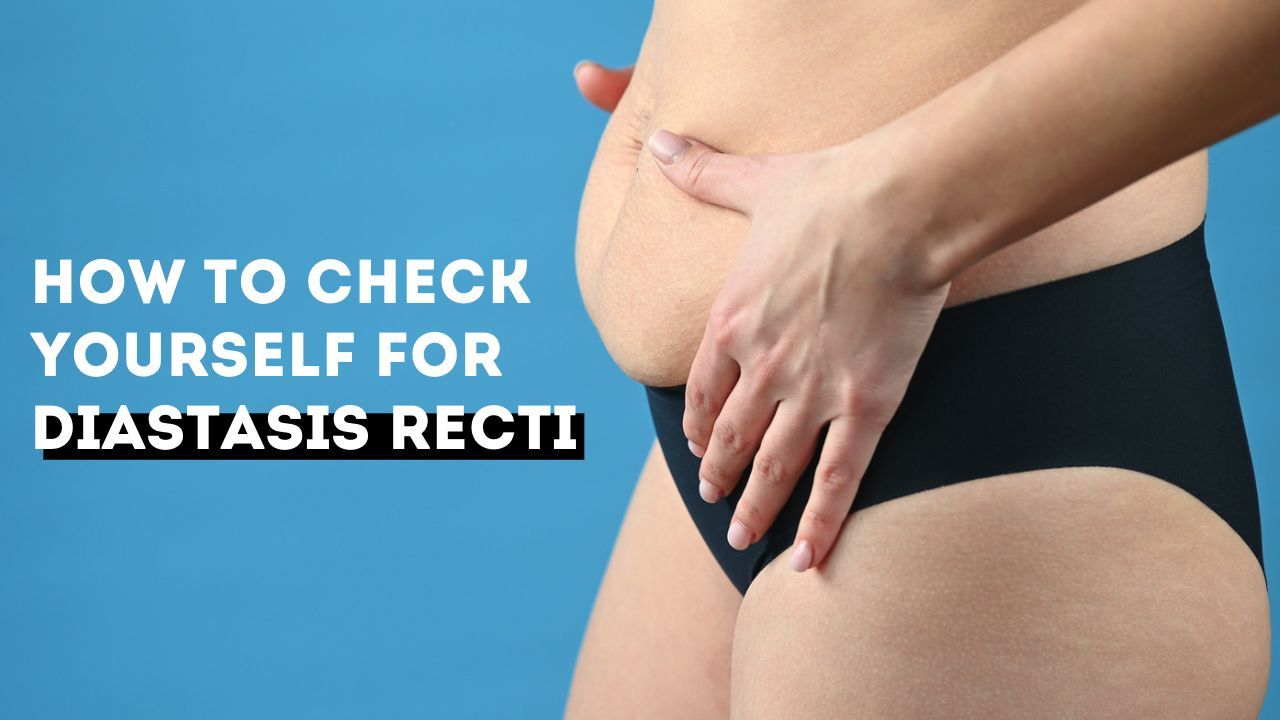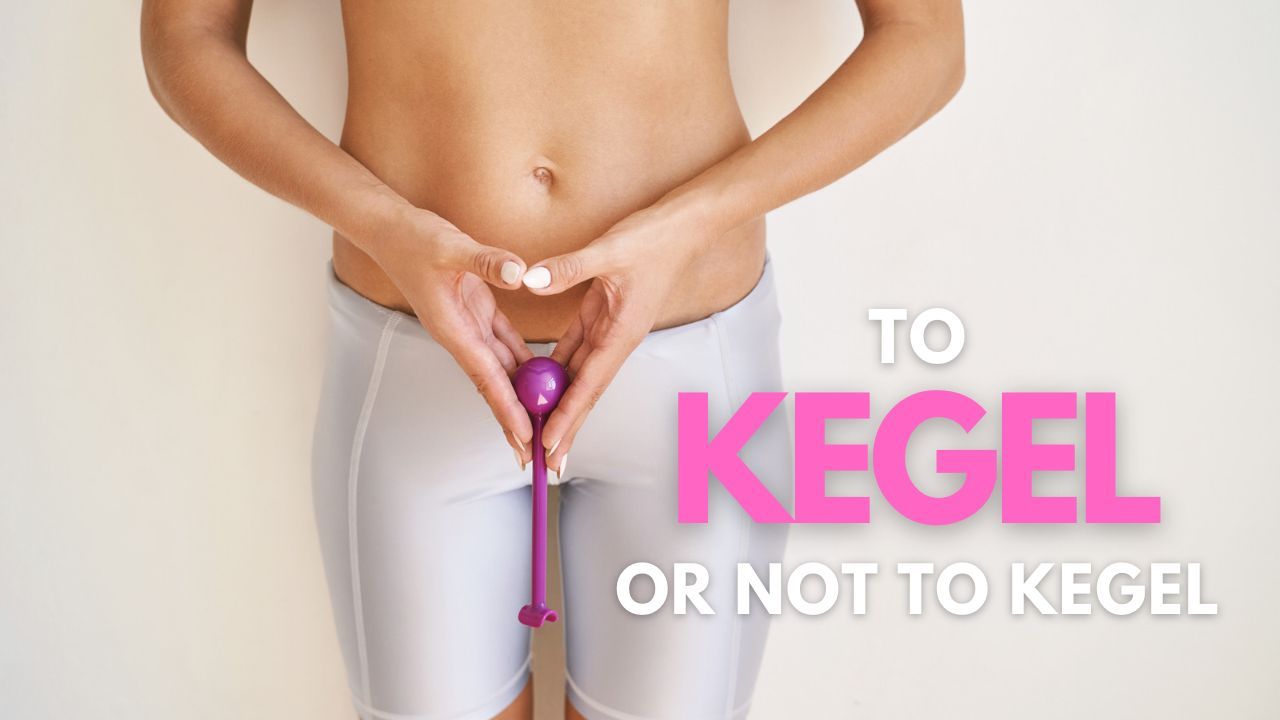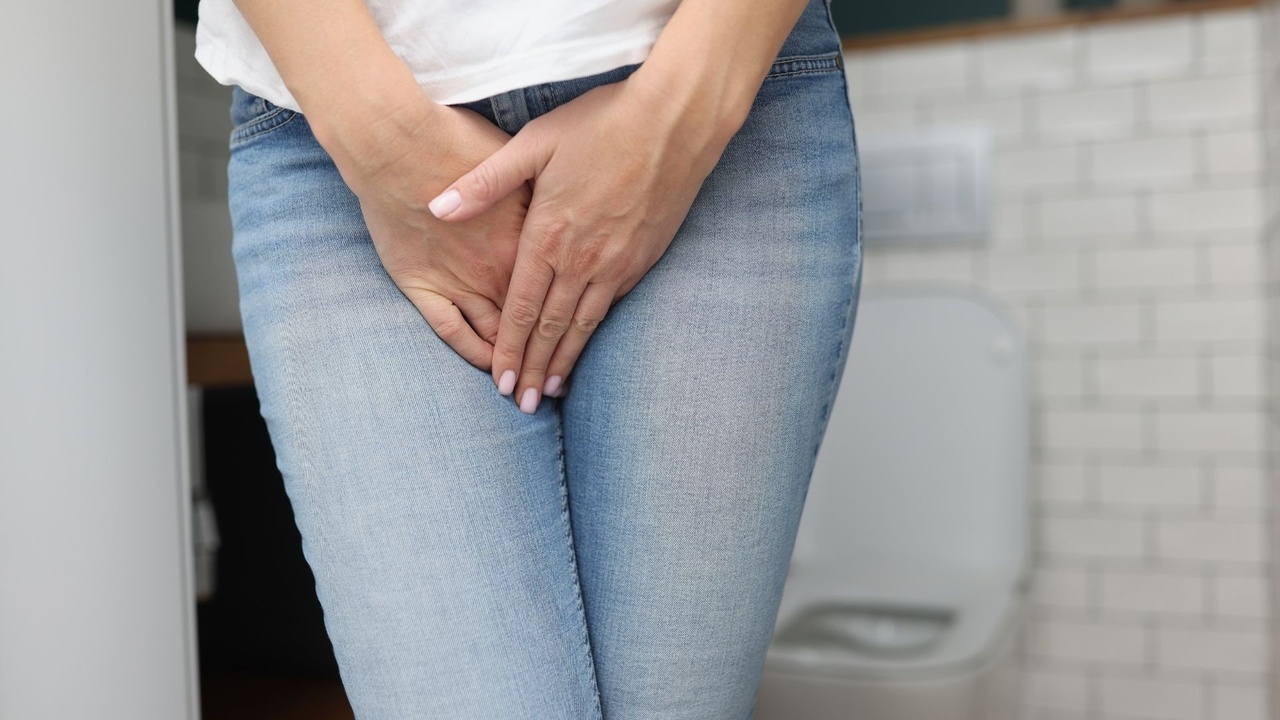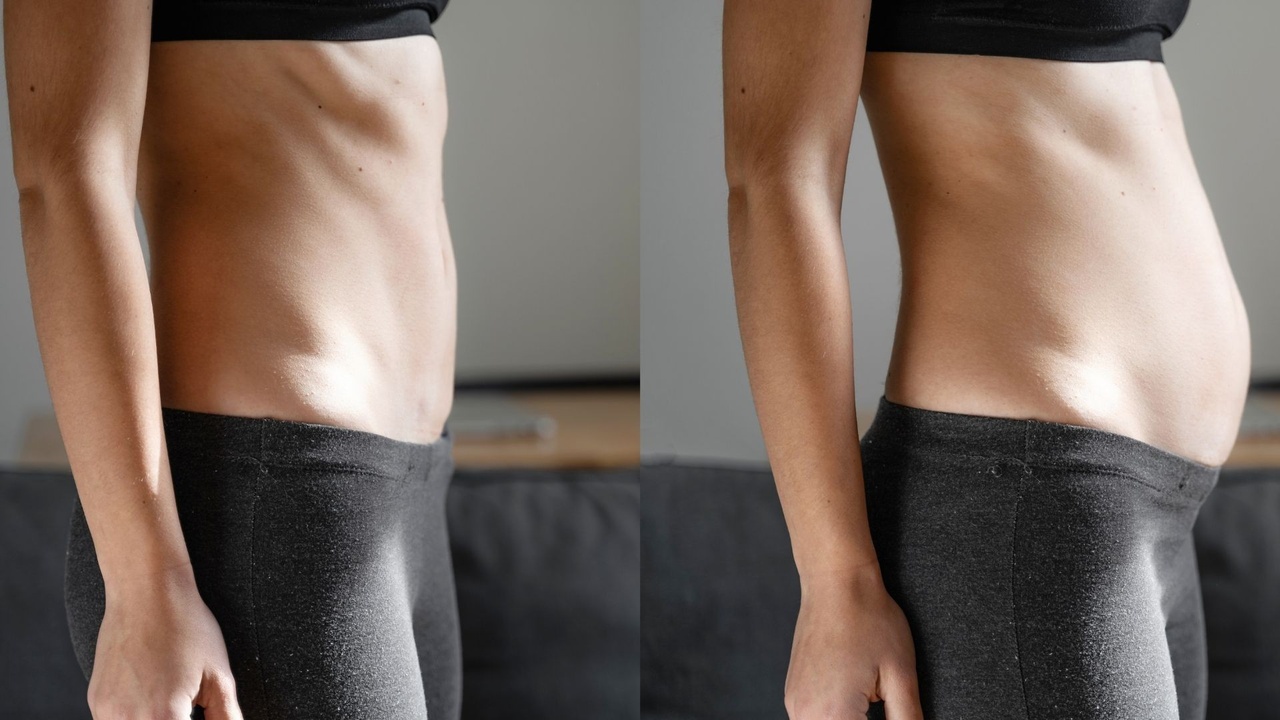Most people think that diastasis looks like this…

When you think about Diastasis Recti (DR), most people think that it either can’t be seen from the outside, that it can only be detected if you try to put your fingers in between your abs, or that if you can see it from the outside that it would look like the first picture above.
But there are actually some pretty common tell tale signs just from looking at a person's stomach (even with clothes on) that they might have a DR.
The thing with diastasis recti is that the two “six pack” muscles are no longer being held tightly together by connective tissue, causing essentially a “collapse” of the abdominal wall and causing it to fall forward. If the muscles are still loose, the connective tissue has nothing firm to hold onto. And if the connective tissue has nothing firm to hold onto and is therefore still loose, then the skin has nothing firm to hold onto either. A domino effect. Because of this, a very common tell tale sign that there might be a DR present, is a sagging belly. Esp...
How to check yourself for Diastasis Recti

I hear so many women confused about whether or not they have ab separation, so let's dive in. Hopefully this information will be helpful to you.
Diastasis recti (or abdominal separation) happens when the connective tissue between your two rectus abdominis muscles or “six-pack” abs become stretched beyond their usual capacity and move apart to allow more space. During pregnancy, the six-pack muscles stretch to TWICE their original length! In some women it resolves by itself after pregnancy, but for the majority of us (especially those of us over 30), it often requires a bit of help to bring the muscles back together again. But contrary to common opinion, diastasis recti (DR) is not unique to pregnant women. It can also be caused by weight gain, weightlifting without proper abdominal pressure management, and is also more common than you would think in men!
As a result of this muscle separation, you might notice (or feel) a gap down the midline of your belly that you can fit your ...
How to lose inches off your waist without dieting

You will never hear me preaching about weight loss, or dieting, or “bouncing back”. Those aren’t phrases I ever use because I’m passionate about teaching women that when we focus instead on teaching the body how to FUNCTION at its absolute best, we will feel so much more capable, aligned, alive. The rest will fall into place.
Stay with me here, because I know you’re thinking “skinny bitch. What does she know? How can she possibly help me?” Hear me out because I have a track record for helping other women lose multiple inches off their waistline, because despite what many women think, those extra inches are not always “weight” related.
While bloating can very often be food related, as a pelvic floor expert I see all too often that a weak pelvic floor also has a huge effect on the way our midsection looks and very often is a major contributor to “belly bulge”. The pelvic floor is the literal foundation of your core, and if you’ve been doing all the crunches with a weak pelvic fl...
To Kegel or not to Kegel

Why Kegels aren’t helping you and what to do instead...
Did you know that Kegels are not particularly effective for the majority of women? That’s because they don’t give you the full picture of what needs to happen in your pelvic floor (the phrase and technique was originally made popular by a male doctor in the 1940s). I used to teach Kegels as a stand alone exercise, but I have since learnt that the pelvic floor was never designed to function/move on its own. It was designed to move in tandem with the diaphragm and it actually behaves and functions infinitely better that way.
The problem with Kegels is that:
a) it encourages “clenching”.
Clenching can very easily cause the pelvic floor to become too tight. And it can be very difficult to strengthen a muscle that is too tight.
and b) Kegels only give you about 20% of the picture.
Meaning, telling your pelvic floor to contract on its own without it working in tandem with your diaphragm is basically a recipe for disaster. I...
3 Core & Pelvic Floor Exercises That Are More Effective Than Crunches

Do you find that doing crunches, sit ups and planks just don’t give you the same results as when you were in your 20s? Or do your abs bulge or look strange when you try to do a sit up?
Think of the abdomen as being like a pressure canister. If when you crunch or do a sit up the pressure makes your lower abs bulge, then that pressure is also likely making your pelvic floor bulge as well.
This is bad because it can cause leaking, and even prolapse symptoms. So if you were thinking that leaking is “just a part of being a mom”, it’s not. It’s a pressure management issue.
There are plenty of ways in which you can strengthen your core that do not involve this high pressure situation. Which means that crunches are actually your least effective option at this point.
I’m assuming you’ve already done my free pelvic floor training to learn how to better manage this pressure (if you haven’t, the link is at the bottom).
Here are my 3 favorite ways to incorporate that technique into some ab ...
Do you experience knee pain when you squat?

Do your knees hurt when you squat? This is one of the most common postpartum complaints I hear from mums besides core and pelvic floor issues.
First, let’s address why it happens in the first place:
During pregnancy, we carry a lot of extra weight in the front. When we carry or hold weight in the front of our body, it causes the front of our body to overwork. The quads (fronts of our thighs) get overused as we carry around this extra weight in the front, and as the quads become stronger, they start to take over, thus allowing the glutes to become weaker.
Have you ever heard the term “mom-butt”? Which refers to the saggy butt we experience as moms. This is why. So unless you were actively and intentionally training your glutes with weights during pregnancy, there is a high probability that your glutes are essentially turned off.
Squatting is a glute exercise. But when the glutes are very weak, we can lean too far forward when we squat, making it a quad exercise, thus exa...
Want to learn how to flatten your mummy tummy?!

You’ve heard me say it a thousand times on instagram “your breath is the most important piece of the puzzle”, but WHY exactly is it so important??
During pregnancy the front of our ribcage must flare out in order to make space for our growing baby. Remember how it became more and more difficult to breathe towards the end of your pregnancy..? We basically all forget HOW to breathe during pregnancy.
After pregnancy, when the bottom of the ribcage remains flared out in the front, it causes the stomach to also protrude. It is not possible to get a truly flat stomach if the ribcage is still flared.
Look at the image below 👇🏻. This is a student of mine. I've put the arrows on there so that you can see the difference in ribcage flare. Look at the difference in the angle of the arrow. It might not look like much, but it makes a HUGE difference to the shape of your midsection. We have almost entirely corrected it due to correcting the BREATHING MECHANICS!! The line of the stomach wi...
The Pelvic Floor: Everything You Needed To Know Sooner!

I was recently given the incredible opportunity and great privilege to collaborate with doctors, physical therapists and birth professionals in the kind of book that should be handed out in high schools and gynecologists offices. This book was a passion project like no other. All of the authors of this book had something unique to share. From personal stories, to anatomy lessons, to helpful tips and solutions to some of the most common postpartum symptoms.
But this book is not just for women. Men have a pelvic floor too. And many even suffer from Pelvic Floor Dysfunction (PFD) without even knowing it. Do you know a man who refers to his “dad belly”? That could very well be related to PFD. In women it’s affectionately referred to as the “mummy tummy”, the fupa, the mom pooch. We’re told “you’re a mom now. It’s part of the package”, but it simply isn’t true. We just have to have the knowledge of how to fix it.

This book covers so much exciting ground. From how the pelvic floor c...
Stress vs Urge Incontinence - What’s the difference and how do they each relate to your pelvic floor?

Stress Incontinence occurs when you cough, laugh, run, jump, sneeze etc, and you pee your pants a little as a result. This often happens when too much pressure is exerted on the bladder, forcing urine out. In most cases, this is a result of weakened pelvic floor muscles, usually due to childbirth, age, and/or menopause. But there are also circumstances that can aggravate stress incontinence, such as obesity, smoking, high-impact activities like running and jumping, and a chronic cough. Women can also experience stress incontinence when doing things like standing from sitting, getting in and out of a vehicle, lifting heavy things and having sex.
Urge Incontinence is also known as Overactive Bladder (OAB) and occurs when there is a strong urge to urinate despite the fact that your bladder may not be full. This urge is often strong enough that you can’t make it to the bathroom in time. While women with stress incontinence leak urine, women with urge incontinence may experience a sudde...
What is Diastasis Recti and can it be fixed?

A diastasis is a thinning of the fascia in the front of your abdomen. When you peel an orange, think of fascia as being like the white layer between the juicy orange and the thick skin. Fascia is the layer in between your skin and your muscles and it runs through your entire body, connecting and facilitating movement. It’s an incredibly overlooked structure in our body that plays a key role in holding us together and is a very important piece of the body puzzle.
With a diastasis (or the thinning of this part of the fascia), think about when you wear a hole in the knee of your jeans from over stretching the fabric. That is essentially what has happened with a diastasis. But the big difference is that fabric cannot repair itself (you’d have to sew on a patch to prevent it from getting worse), but the body has a remarkable ability to repair itself. As long as you stop doing the things that are making the thinning worse in order to allow the body the space to heal.
Fascia is primar...

